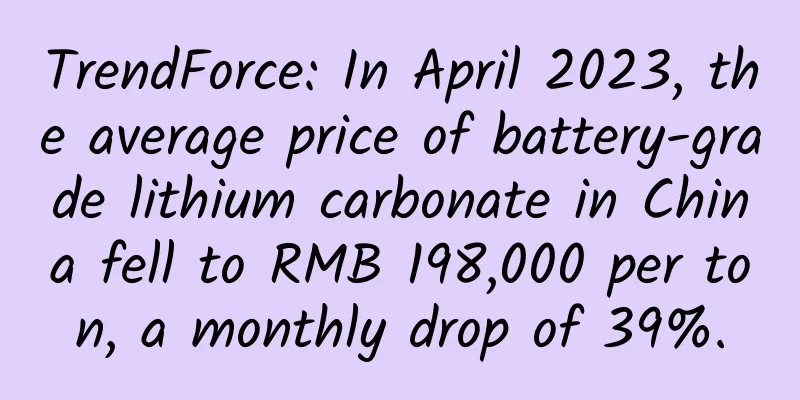Unlocking the "treasure bowl" of oil and gas: Providing a "Chinese sample" for global shale gas

|
In southern Xinjiang, my country, the Tianshan Mountains, Kunlun Mountains, and Altun Mountains surround the Tarim Basin from three sides. As my country's largest inland sedimentary basin, there is the vast Taklimakan Desert, with howling winds and rolling sand dunes, as if nature has drawn a magnificent picture with a majestic brushstroke; there are also ancient rivers and oases, as well as energy treasures buried deep underground. Life blooms tenaciously on this seemingly barren land, demonstrating tenacity and endless vitality. On this land, oil workers have gone forward one after another, raised the flag of the expedition, deeply studied the strata, analyzed the sedimentary sequence, and forged the solemn oath of "I will dedicate oil to the motherland." More than 30 years ago, He Dengfa started from here and began his oil journey. ▲He Dengfa Tarim Basin, Junggar Basin, Sichuan Basin, Ordos Basin, Qaidam Basin, Bohai Bay Basin... He Dengfa has explored mountains and basins, and carved his exploration motto "Traveling through thousands of rivers just to light up the light of energy" in the mountains and gullies. As a member of the petroleum scientific research workers, he has been deeply involved in the field of geological exploration, supporting oil and gas exploration and development with theory, and together with tens of millions of Chinese petroleum workers, he has established "star landmarks" deep underground, making important contributions to ensuring national energy security. Theory supports practice and helps ultra-deep oil and gas exploration and development "The vast sea is covered with hundreds of feet of ice, and the gloomy clouds are condensed for thousands of miles." The Tarim Basin is vast and mysterious. The boundless desert and the majestic mountains complement each other, telling the vicissitudes of billions of years and carrying endless geological legends. Over the years, the vast Gobi Desert has left the footprints of He Dengfa's team, and witnessed their efforts and gains. Millions of years of changes have buried oil deep underground, leaving people with many problems in finding them. In order to determine its specific location, oil explorers need to use geological knowledge to understand the sedimentary strata and structural characteristics, so as to find favorable areas and distribution patterns for oil and gas generation and accumulation. In 1995, the fledgling He Dengfa led the Southwest Tarim Comprehensive Petroleum Geology Research Team established by China National Petroleum Corporation. For more than three years, he led the team members to run through every river valley in the "horseshoe-shaped" area in the front of the West Kunlun Mountains and the western section of the South Tianshan Mountains, and conducted observations, measurements and sampling of structural elements, source rocks, and reservoirs along the river valleys, and used advanced structural geology theories to carefully interpret the existing reflection seismic profiles. In the completed comprehensive geological evaluation report, they summarized the main characteristics of oil and gas geology in the Southwest Tarim Depression and proposed eight exploration directions. This report had a profound impact on the subsequent exploration and research deployment in the southwestern part of Tarim. In recent years, the breakthroughs in oil and gas exploration in the periphery of Kekeya, the front of Kashgar Mountain, and the upper slope of Maigaiti all gave corresponding geological models in this report. "Oil was first discovered in the minds of geologists." The discovery of the Akmomu gas field in the first year of the 21st century adopted the structural model proposed by He Dengfa after in-depth research. This model combines surface measurements, drilling data, and seismic interpretation to provide a detailed geometric and kinematic model of dual structures, which not only guides shallow exploration discoveries, but also predicts that there will be larger scales in the deep layers. In the years that followed, he continued to explore the structure, genesis, and oil and gas distribution issues of the Tarim Basin in a deeper, wider, and longer time and space, and also achieved remarkable results. ▲He Dengfa discusses with his doctoral supervisor, Academician Li Desheng (left) In addition to the Tarim Basin, under the guidance of predecessors such as Li Desheng, Tong Xiaoguang, Zhang Guowei, and Jia Chengzao, He Dengfa also took Sichuan and Ordos Craton Basins as the main research objects, deeply cultivated the geological structure and genetic mechanism of sedimentary basins, developed the active tectonic history view and active tectonic-paleogeographic thought, proposed and improved the prototype basin restoration method and tectonic genesis theory of "craton multi-cycle superimposed basin", systematically restored the tectonic-sedimentary environment, sedimentary filling sequence and prototype basin superposition process of the prototype basins in different geological periods of the three major basins, and pointed out that the middle and lower combinations of superimposed basins are the main successor areas of oil and gas exploration in my country's marine basins. This theory is like a "key" that opens the mysterious door to oil and gas exploration in the craton marine basins, and also supports the major discovery of related risk wells, accumulating valuable experience for my country to explore the oil and gas content of deep-ultra-deep layers and accelerate the exploration process of ultra-deep carbonate rocks in new areas. In recent years, he has conducted research on Precambrian basins, and figuratively likened the Mesoproterozoic and Neoproterozoic strata to "basins under basins". He believes that these basins have a "wide rift" structure and have rich oil and gas resource potential. The legend of China's oil and gas discovery is constantly being written, which must have been slowly realized under the guidance of advanced theories and the unremitting efforts of oil workers. As a member of the team, He Dengfa's exploration has never stopped. According to the particularity of "the genesis of China's marine craton basins", he led the team to continuously enrich the academic ideas of "active tectonics-paleogeography" and "multi-cycle superimposed basins", established and improved the analysis methods of "prototype basins" and "petroleum system cycles", and expanded new academic ideas for the structural analysis and oil and gas geological research of my country's marine sedimentary basins. The concept of "stereoscopic exploration theory of multi-cycle superimposed basins" he proposed provides a new reference and reference model for oil and gas exploration in large superimposed sedimentary basins in my country. It not only provides an important theoretical basis for oil and gas exploration in the Tarim Basin, allowing people to more accurately grasp the distribution of oil and gas resources under this land, but also lays an important academic foundation for ultra-deep exploration in basins such as Sichuan, Ordos, and Junggar. "At present, the global ultra-deep oil and gas exploration has discovered 52 oil and gas fields with a burial depth of more than 8,000 meters, mainly distributed in the deepwater basin of the Gulf of Mexico in the United States, the Tarim Basin, Sichuan Basin and Junggar Basin in China." He Dengfa introduced that my country's ultra-deep oil and gas resources account for 33% of the remaining total resources, which is an important successor to oil and gas exploration in the future. As my country's oil and gas exploration and development gradually enters the deep space of 10,000 meters, the geological conditions and distribution laws of oil and gas under ultra-deep high temperature and high pressure environment, the geological types of ultra-deep exploration targets, the prediction methods of large-scale reservoir geological units and large-scale enrichment zones, and the key technologies and equipment supporting ultra-deep oil and gas exploration have become the key directions of scientific research in the next step. "Theory originates from practice, is further improved in practice and fed back to practice, forming a virtuous circle, which is also inevitable in petroleum geological research." Based on years of exploration and practice in southwestern Tarim Basin, Kuche and southern Junggar Basin, He Dengfa and his colleagues proposed and improved the "four-step method" for structural modeling of foreland thrust belts, established a two-point structural wedge extension model for foreland thrust belts, and widely applied and tested it in 15 foreland thrust belts in central and western China, playing an important role in structural modeling and risk exploration well location demonstration and breakthrough in these areas. Through the study of the southern and northern foreland belts of the Tianshan Mountains, they greatly improved the accuracy of the analysis of the effectiveness of oil and gas traps, and provided a tectonic basis for the discovery of the Keshen-Dabei gas field in the Kuche Depression and the Horgos oil field and Mahe gas field located on the southern edge of the Junggar Basin. Explore the secrets of multiple slips and unlock the "treasure pot" that is not always integrated Under the trend of global energy transformation and diversified development, the North American shale revolution has gradually moved from the 1.0 era to the 2.0 era since 2015. As the largest shale gas producer outside North America, my country has gradually achieved scale and efficiency development of shale gas resources with the Sichuan Basin and its neighboring areas as the focus. It was also in this year that He Dengfa, as the person in charge of the National Natural Science Foundation key project "Multiple Detachment Structural Deformation Systems in the Eastern Sichuan Basin and Their Controlling Effects on Oil and Gas", started the exploration of the geological spatiotemporal evolution and oil and gas accumulation laws in the eastern Sichuan Basin. As a large-scale accumulation area of conventional oil and gas and a huge potential area for unconventional oil and gas (shale gas) in my country, the Sichuan Basin is surrounded by high mountains, and the basin is crisscrossed with hills and valleys, interweaving rivers, and beautiful and rich. In the long geological history, it has experienced the baptism of many tectonic movements. The collision, compression and stretching of plates and the combined effects of multiple slip layers have made the geological structure here extremely complex. He Dengfa is well aware that in order to deeply understand the geological structure of this area, understand its resources and environmental characteristics, it is an important foundation to depict the tectonic evolution history of the basin; and restoring the prototype basin in the geological history period and restoring its superimposed evolution process is an important way to complete the "description" of the basin's tectonic evolution. "The eastern Sichuan region belongs to a barrier-type anticline belt, which is like a hurdle, one after another, and very complex. It was impossible to fully explain and analyze this layered and slipped deformed structure at that time. How is natural gas stored in such a complex region? We can only analyze it step by step and start studying one belt at a time." Over the past four years, He Dengfa led the project team over mountains and over rivers, overcame difficulties, and conducted an in-depth analysis of the geological structure of the eastern Sichuan Basin. He identified three major slip layers: the Triassic Jialingjiang Formation-Leikoupo Formation gypsum salt rock, the Silurian Longmaxi Formation mudstone, and the Cambrian Gaotai Formation salt rock. He clarified the stratified and slipped structural deformation characteristics of the eastern Sichuan fold-thrust belt; he also identified the major tectonic events in the Mesozoic and Cenozoic periods, and discussed the tectonic kinematic processes in the study area. Based on the results of these projects, He Dengfa's team continued to conduct in-depth research. Through comprehensive research on tectonic stress fields, abnormal fluid pressure fields, and rock rheology, they took the eastern Sichuan Basin and western Hunan and Hubei as research bases and gradually established the "Multiple Detachment Structural Deformation System and Relatively Stable Oil and Gas Preservation Unit Theory", which provided important theoretical support for exploring the laws of oil and gas accumulation and determining new exploration areas in this region. In fact, the detachment structure is a structural phenomenon in which the rock layers shear and slide along certain weak surfaces under certain stress conditions due to the difference in physical properties between different rock layers in the lithosphere. In the eastern Sichuan Basin and the western Hunan and Hubei regions, this detachment structure has multiple layers and different detachment surfaces, forming a complex and unique geological structure system. In the process of geological evolution, the detachment layer plays a buffering and protective role, allowing the lithosphere to be relatively stably preserved under the impact of tectonic movements. This relatively stable preservation method can provide good geological conditions for the generation and storage of oil and gas. The "multiple detachment structural deformation system" is not only a geological tectonic phenomenon, but also an important way to preserve the continental lithosphere. As the research continues to deepen, He Dengfa's team proposed that the "relatively stable preservation unit" controlled by the detachment layer is a favorable unit for the occurrence of oil and gas in complex tectonic areas such as eastern Sichuan and western Hunan and Hubei. These relatively stable preservation units are like "safes" for geological treasures, providing a safe place for the accumulation of oil and gas. This discovery provides a theoretical basis for the occurrence of large shale gas fields in the Longmaxi Formation in Fuling-Dingshan, Weiyuan, Southern Sichuan, Zhaotong and other areas, and also lays a rock mechanics foundation for stratified and large-scale three-dimensional development. ▲He Dengfa introduces the contents of the exhibition board to Academician Dai Jinxing (right) In October 2020, the expert group of the Ministry of Natural Resources of the People's Republic of China reviewed and approved Sinopec's "New Report on Proven Reserves of Shale Gas in the Dongsheng-Pingqiao West Wufeng Formation-Longmaxi Formation", officially confirming this new shale gas resource block located in Nanchuan District, Chongqing, with proven geological reserves of 191.8 billion cubic meters. This is also the first confirmed normal pressure shale gas resource block in China. This new block breaks the tradition that shale gas exploration and development in my country has been mostly concentrated in areas with relatively simple geological conditions and relatively good preservation conditions. It is located in a complex high-steep structural belt with many faults and large formation dips. This has once again enriched the practical application of the "theory of multiple slip structural deformation systems and relatively stable oil and gas preservation units". As the beginning of the commercial development of shale gas in my country, the Fuling shale gas field is not only the first large-scale shale gas field in my country to achieve commercial development, but also an important breakthrough in the exploration and development of shale gas in China. The discovery and development of this gas field has promoted my country to become the first country outside North America to achieve commercial development of shale gas, providing a "Chinese sample" for the development of global shale gas. So far, the Fuling shale gas field has accumulated nearly 900 billion cubic meters of proven shale gas reserves, accounting for 34% of the country's proven shale gas reserves, and the cumulative output has exceeded 65 billion cubic meters. Clean and efficient shale gas is "squeezed" out of the shale layer thousands of meters deep, "riding" the Sichuan-East Gas Pipeline, entering thousands of households along the line, and can be used by about 130 million households for one year. Behind the impressive figures are the hard work, dedication, wisdom and responsibility of Chinese oil workers, including He Dengfa's team. They use solid professional knowledge as the cornerstone and tenacious perseverance and indomitable spirit as the pillars to continuously unlock the oil and gas treasures in this vast land. The teacher's kindness is unforgettable, and I will inherit it and start a new journey In 1985, at the age of 18, He Dengfa was admitted to the Department of Geology at Northwest University to study mineralogy and petrology. In his senior year, he took a petroleum geology course and from then on, he became inextricably linked with oil and gas exploration. After graduating from college, in order to advance in the field of oil and gas research, he was admitted to the Graduate School of the Beijing Institute of Petroleum Exploration and Development, where he studied under Professor Tong Xiaoguang, a famous geologist in my country and the then Chief Geologist of the Tarim Exploration and Development Headquarters. ▲He Dengfa discusses with his master's supervisor, Academician Tong Xiaoguang (left) "When I was studying for my master's degree, the Tarim Oil Campaign was in full swing, and I was fortunate to be a part of it." The Tarim Oilfield has a low geothermal gradient, deep reservoirs and complex geological structures. In this challenging environment, He Dengfa followed his mentor, Academician Tong Xiaoguang, to conduct detailed research on the distribution patterns and exploration directions of oil and gas in the basin, and accumulated rich practical experience here. "Teacher Tong has advanced thinking and has profound and unique insights into exploration issues. He requires students to report on their work for the week to his dormitory every Friday, and inspires and guides students during the communication, making them aware of their own shortcomings in thinking, which greatly improves their thinking ability and innovative thinking." He Dengfa recalled that he benefited a lot from Teacher Tong's insights in his views on the Kuche Depression and some issues within the basin. "Teacher Tong pays attention to the accumulation and in-depth thinking of literature. The first article he gave me was "Oil and Gas Play maps in Exploration and Development" written by White in 1988. He asked me to check all the references of the article, including the literature of his "grandfather's generation" and "father's generation." He Dengfa spent 10 months carefully reading these documents, and gained a deeper understanding and knowledge of the ins and outs, current situation and research methods of related fields, laying a solid foundation for subsequent scientific research. During the Tarim Campaign, Tong Xiaoguang led the team to creatively propose that the Tarim Basin has superimposed composite properties, and determined the distribution law and exploration direction of oil and gas. This research won the first prize of the Science and Technology Progress Award of China National Petroleum Corporation, and provided directional guidance for the Tarim Oil Campaign and subsequent exploration and development. He Dengfa's master's thesis also revolved around "Analysis of Carboniferous Oil and Gas Zones in the Middle Section of the Tabei Uplift in the Tarim Basin". With his excellent results, he was named an outstanding graduate of the class of 1992. After graduating with a master's degree, He Dengfa continued to study for a doctorate at the Graduate School of the Exploration Institute, where he studied under the tutelage of Academician Li Desheng, a famous petroleum geologist in my country. "Mr. Li is a leader in my country's petroleum geology. He is rigorous and meticulous in his studies, and he has used his life to interpret the spirit of a scientist." He Dengfa said that Academician Li Desheng strives for excellence in scientific research and is very strict with his students. His spirit of seeking truth and innovation and encouraging students has set an example for every student. "Mr. Li also pays great attention to the cultivation of students' comprehensive abilities and overall awareness. In the past three years, students have been greatly trained and improved." He recalled that in the basin analysis class, the teacher assigned homework requiring students to summarize the characteristics of basins in western, eastern and central China and write corresponding papers. "This assignment seems simple, but it actually requires students to read a lot of information, draw diagrams and analyze, and think comprehensively. Although I handed in the assignment at the time, looking back now I didn't do my best." In the nearly 30 years since then, He Dengfa has been deeply engaged in the research field of "multi-cyclic superimposed sedimentary basins" and gave a report at the 2022 Academician Li Desheng Academic Thought Seminar and the celebration of Academician Li's 100th birthday, reporting his latest research results to his teacher. ▲He Dengfa took a photo with Professor John Suppe (right), a member of the U.S. National Academy of Sciences Learning never ends, and hard work pays off. In 2004, He Dengfa came to the Department of Earth Sciences at Princeton University in the United States as a senior visiting scholar, and followed Professor John Suppe to study the north-south structure of the Tianshan Mountains and explore the theory of fault-related folds in depth. "Professor John Suppe is the founder of this theory. His teaching methods are rich and diverse. He not only explains the basic concepts, but also leads students to participate in classroom teaching, conduct field surveys and discuss problems." In this process, He Dengfa not only further enriched his knowledge of the theory of fault-related folds, but also made significant improvements in three-dimensional structural analysis, quantitative analysis, causal mechanism research and the application of geomechanical methods through practice. "These experiences and inspirations played an important role in promoting my later research in the fields of structural analysis." He Dengfa said that mentors played a vital role in his academic career. "Their unique teaching and training methods have had a positive and far-reaching impact on my growth and development, and their spirit has guided my future scientific research life." In 2006, He Dengfa joined the School of Energy, China University of Geosciences (Beijing), and started his career as a teacher. "There are many great professors in China University of Geosciences, such as Professor Yang Zunyi, Professor Wang Hongzhen, Professor Yang Qi, and Professor Zhao Pengda. The academic atmosphere here is relaxed and active, and the students are tenacious and hardworking." For 19 years, he has always adhered to the concept that education and scientific research complement each other, inherited the teachings of the professors, and cultivated talents in geology and petroleum exploration by his rigorous academic attitude, rich teaching experience and unique educational philosophy. He teaches many courses covering different levels of undergraduates and postgraduates, including undergraduate professional basic courses "Basins Analysis Foundation" and "Geology of Oil and Gas Basins", professional elective course "Introduction to Large Oil and Gas Fields", master's degree courses "Analysis of Oil and Gas Basins" and "Case Analysis of Large Oil and Gas Field Exploration", elective course "Theory and Application of Structural Modeling", and doctoral degree courses "Dynamics of Sedimentary Basins" and "Applied Structural Geology: Principles and Applications of Fault-Related Folding". These courses cover several important areas of geology, providing students with a systematic and in-depth knowledge system. In addition to carefully arranging the course settings, He Dengfa also pays attention to the innovation of teaching methods and the improvement of teaching quality. With rich practical experience and profound academic attainments, he combines theoretical knowledge with actual cases to enable students to better understand and apply what they have learned. His teaching style is rigorous and vivid, which stimulates students' interest in learning and spirit of exploration. He pays attention to communication and interaction with students. Every Saturday in spring, he will select a topic and have relevant discussions with students. He also strives to cultivate students' global vision and believes that students cannot be limited to one or two methods, otherwise their understanding and penetration of doing things will not be strong. "Just like what Mr. did to me back then, I also require my students to be meticulous and strive for excellence, and maintain a rigorous scientific research attitude and diligent work style during their doctoral studies." His doctoral students must publish at least 1 to 2 articles or make 4 large-scale reports when they start their thesis. "It is necessary to clarify the degree of understanding of the theory, what research methods are planned to use, what breakthrough results may be achieved, and to understand the extent to which predecessors have achieved in related fields, what problems there are, and their overall considerations." He Dengfa said that through 4 large-scale reports, students can truly understand what they want to do and how to do it. The students are everywhere. He Dengfa, who has been teaching at China University of Geosciences (Beijing) for 19 years, has trained doctoral students in scientific research institutions, colleges and universities, and production lines. "Some of them chose to stay in school and have now become professors and doctoral supervisors. I am very pleased to see that they can contribute to the development of geology and oil and gas exploration in my country." Concentrate on asking questions and make the strongest voice in China Still waters run deep; steady progress leads to a long distance. For more than 30 years, He Dengfa has long been accustomed to living with mountains and rivers, and working sleeplessly, because the road of basic research has always been long and lonely, but it has injected fresh sources of energy into scientific research and innovation and laid a solid foundation. ▲He Dengfa is investigating geology in the field He established a geodynamic model of multi-cyclic superimposed sedimentary basins, pointing out that the central and western sedimentary basins have experienced three major extension-convergence cycles and are composite superimposed basins of marine cratonic basins and continental foreland basins; he pointed out that the deep strata in superimposed basins are the main areas of oil and gas exploration and established a three-dimensional exploration theory for multi-cyclic superimposed basins. He established a structural model for the foreland belt of the central and western regions, pointed out that the foreland fault-related folds and superimposed structural belts are important targets for oil and gas exploration breakthroughs, and laid an important foundation for oil and gas discoveries in the foreland belt of the central and western basins. At the same time, he established multiple genetic models of the ancient uplifts in the craton, revealed the tectonic evolution process, and established the theory that the ancient uplifts in the craton basin controlled oil and gas. He developed the theory of normal fault-related folds and its geometric and kinematic research methods, enriched the theory of fault-related folds, and provided new academic ideas and analysis methods for engineering geology and earthquake disaster prediction. Over the past 30 years, He Dengfa's research has been broad and in-depth, just like his school experience - "undergraduate study of mineralogy and petrology, master's degree study of oil and gas exploration, doctoral study of basin structure and oil and gas distribution law, postdoctoral work and geophysics", covering key areas such as sedimentary basin analysis, fault-related fold theory and application, active tectonic and seismic fault research, oil and gas geology and exploration field evaluation; he not only pays attention to professional knowledge literacy, but also advocates curiosity and a broad knowledge system. He believes that in addition to a solid foundation and broad interests, we must seize every opportunity to learn and improve ourselves, so that we will not limit our horizons in the future. "In 2006, I was invited by Academician Zhang Guowei to participate in the Sichuan Basin scientific research project. This cooperation allowed me to truly combine the research of basins and orogenic belts, broaden my scientific research horizons, and provide a broader idea for future basin research." Today, He Dengfa has built a multi-level scientific research team, which is constantly making efforts in scientific research fields such as sedimentary basin analysis, fault-related fold theory and application, active tectonic and seismic fault research, global large oil and gas field distribution law, oil and gas geology and exploration field evaluation. The team consists of an "internal team" and an "external team" - the internal team is composed of his doctoral students and postdoctoral fellows, focusing on the analysis of basin structure; the external team is jointly undertaken by the Institute of Geology and Geophysics of the Chinese Academy of Sciences, Northwest University, Chengdu University of Technology, Peking University and other units to undertake some large-scale scientific research projects. "A relaxed research atmosphere is conducive to academic discussion and collision of ideas, and multidisciplinary cross-collaboration can promote the healthy and rapid development of disciplines." In addition, everyone also complements each other academically with the "Ten Thousand Talents Plan" scientist team of Academician Ma Yongsheng, and is jointly committed to the research of basins such as Sichuan, Tarim, Bohai Bay, and Ordos, and regularly holds annual meetings for academic exchanges and collision of ideas. "The scale of this annual meeting has been continuously expanding, and it has formed a platform for academic exchanges, which has promoted the development of the industry and talent training." "China's superimposed sedimentary basins can be divided into multiple regions, each with its own unique geological history and evolution process. A deep understanding of the geological structure and tectonic evolution of the basins, and the exploration of the distribution of oil and gas in the basins will lay an important foundation for revealing the properties of the Chinese mainland, the distribution of resources and energy, environmental changes, and new areas of oil and gas exploration." He Dengfa said that in the future, he will work with his team to build a theoretical system of multi-cycle superimposed sedimentary basins in the Chinese mainland, and continue to write and improve on the basis of published works, in order to form a series of books, "which will help to fully understand the formation and evolution of the basins, provide relevant theoretical guidance for my country's oil and gas exploration, and help explore more energy treasures." From China to the world, the study of global sedimentary basins will clarify the formation mechanism of basins under the global tectonic system, "I hope to make a Chinese voice in the study of the classification, genesis and distribution of global basin tectonics." The journey is long, but the original intention remains unchanged. Adhering to the ideas of his mentors Li Desheng, Tong Xiaoguang and others, He Dengfa led his team to study the fertile academic soil of basin structure and oil and gas geology, which not only contributed to my country's energy security, but also wrote a glorious chapter for the development of geological science. Years engrave glory, struggles make dreams come true. As global energy demand continues to grow, innovation remains the key driving force for sustainable development in the field of oil and gas exploration and development. He Dengfa will also lead the team to demonstrate the era of energy development with persistence and perseverance. Their story continues... Expert Profile He Dengfa is a second-level professor at China University of Geosciences (Beijing), a distinguished professor at Northwest University, a member of the Jiusan Society, and a doctoral supervisor. He is a member of the Structural Geology and Geodynamics Committee of the Geological Society of China, the leader of the Basin Tectonics Group of the Petroleum Geology Committee of the China Petroleum Society, and a member of the Oil and Gas Reservoir Group. He is also an active member of the American Association of Petroleum Geologists (AAPG). He is an editorial board member of journals such as Acta Petrolei Sinica, Petroleum Exploration and Development, Journal of Paleogeography, and Earth Science Frontiers. He has been engaged in structural analysis and oil and gas geological research on large oil and gas basins in China for a long time, and has made important theoretical progress in the structural analysis of foreland thrust belts and the study of superimposed basin dynamics. Over the years, he has presided over many national and enterprise-level scientific research projects, won the second prize of the National Science and Technology Progress Award once, and the first and second prizes at the provincial and ministerial levels 16 times. He was awarded the title of National Young Post Expert in 2001, published 12 academic monographs, and published more than 300 academic papers. |
<<: Another asteroid is about to hit the Earth? The truth...
Recommend
How can an APP quickly build a push operation system?
The Internet population dividend has completely b...
"Crayfish feel pain, steaming them alive is too cruel" In the future, when making spicy crayfish, you can only electrocute them one by one
This summer, have you tried the beer and crayfish...
Laser focus is awesome! LG's new flagship G3 camera test
Earlier today, LG officially launched its new gene...
The most seductive love poems of 2018! Take it and use it!
It is said that an experienced and excellent copy...
CES2015: ASUS T90Chi is coming with a strong presence
The 2015 World Consumer Electronics Show has fina...
The advertisements you hate may be your shortcut to wealth! Learn more about advertising alliance money-making projects
There are actually many ways to make money using ...
An Incomplete Guide to Programmer Interviews
[[151466]] It is difficult for programmers to fin...
Students across the country are starting to "make up homework mode"! This may be more terrible than procrastination
At the end of winter vacation, many children have...
Good news for those who love to pick up trash! A 3-cent bottle can be sold for 20 cents here
On October 30, 2023, the United Nations Environme...
Intelligent information control has achieved remarkable results, and Guangzhou Huangpu has created a new pattern of social governance with co-construction, co-governance and sharing
The average delay of vehicles at intersections ha...
The game is so small that it is less than 1KB
As games get better and better, their size also i...
Apple releases medical research platform RearchKit, open source!
[[128956]] On March 10, Apple announced the relea...
Android Pie SDK is more compatible with Kotlin
[[240538]] One of the most common pain points whe...
What should the TV industry do in the future when it is stuck in the quagmire of closed-door development? The mobile phone industry has given the answer
Under heavy pressure, TV manufacturers have resor...
Conversion rate 40%, tips for creating hit events!
Today’s article will talk about how to conduct re...









